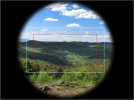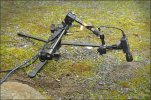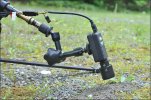I agree, you never truly find out what a lens is capable of until you try it. As for lens vs sensor sizing, when it's close, you can get the result you've found because I'm pretty sure lens manufacturers design in a bit of a margin for error simply because they want to avoid vignetting. It's always better to over fill than to vignette.
I'm a bit puzzled why you seem to keep bringing up things that are not quite germane to the subject at hand here and so I made an effort to clarify what we are actually discussing and working with here when I said above,
"Well, remember, this is a thread about a 5MP ƒ/1.6 6-22mm varifocal lens that is designed for a 1/2.5" sensor which we are using on a 1/3" sensor."
In your response to my comment above you state that: "
As for lens vs sensor sizing, when it's close, you can get the result you've found because I'm pretty sure lens manufacturers design in a bit of a margin for error simply because they want to avoid vignetting. It's always better to over fill than to vignette."
"Margin of error" has nothing whatsoever to do with the my results from this lens!
For one thing. I'm not clear how you even reach the conclusion that lens manufacturers design for a margin error as optics are generally designed to very exacting specifications to match specific sensors, which are also designed to very exacting specifications. Each lens design throws an image circle of different size but they are ALL designed to accommodate their rated specs rather than some "margin or error". I mean, you can characterize this as a "margin of error" but they are simply designed to do what they do, which is to throw an image circle large enough to cover the sensor they are rated for, otherwise they would not perform according to their rated specs. Lens designers don't say to themselves,
"Hmmm....I think I'll add a little extra, just in case."
Your comments here suggest that you have some misconceptions about the design of this particular 6-22mm varifocal lens as well as how sensor sizes actually work. Any so called "margin of error" in conjunction with your concerns about potential vignetting are not relevant here as that's not how this works!
For one thing, the 6-22mm ƒ/1.6 varifocal lens is designed specifically for a 1/2.5" image sensor. The Mobius camera uses a 1/3" sensor. Thus, the lens throws an image circle that is significantly larger than the camera's sensor and so vignetting is not in any way an issue. This has nothing to do with a manufacturer designing in some
"margin of error", this is simply a matter of a lens designed for a larger sensor size than the one in the camera it is mounted on.
Sensor sizing can be somewhat confusing because of the way the terminology is applied. In this case, the varifocal lens is designed to accommodate a 1/2.5" image sensor which measures 5.76mm by 4.29mm (7.18 diagonal).
The Mobius uses a 1/3" sensor which measures 4.8 x 3.6 mm (6mm diagonal). This is why vignetting would be of no concern here.
Secondly, you raised the concern about image cropping. This is not particularly relevant
in this situation because of the particular sensor involved and this is what
@Lola was actually referring to in her post (which was accurate).
To quote you:
"With cropping there's also going to be the resolution issue as well as you're cropping only some of the pixels onto a MP sensor and so still need enough resolution to exceed the pixel resolution of the sensor otherwise you're going to lose resolution."
The 1/3" Aptina AR0330 sensor used in the Mobius has a CMOS array of 2304 x 1296 pixels. It uses pixel binning to scale this down to 1920 x 1080 when set to "wide mode". If you set the camera to shoot in "narrow mode", it captures a full 1920 x 1080 image directly from the center most portion of the CMOS array with no scaling. So again, we have a non-issue. No matter how much the image is cropped due to the size of the image circle thrown by the 5MP varifocal lens you will never lose enough resolution to be concerned with in any practical manner.














